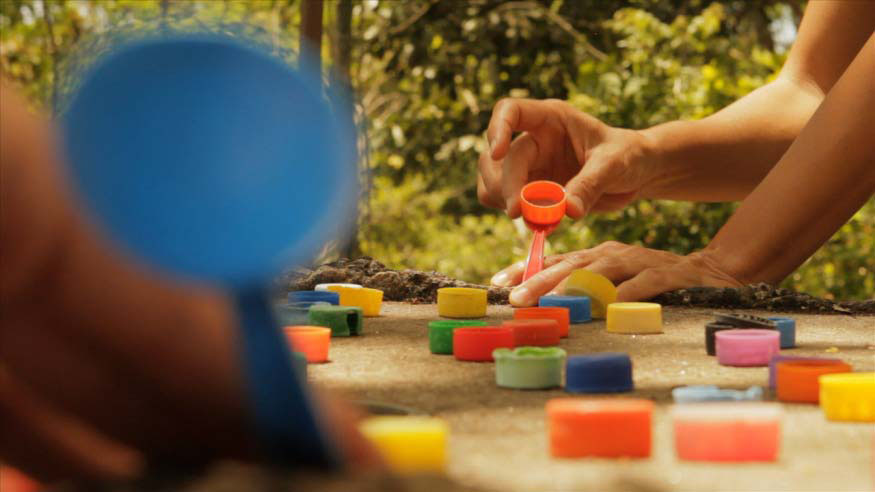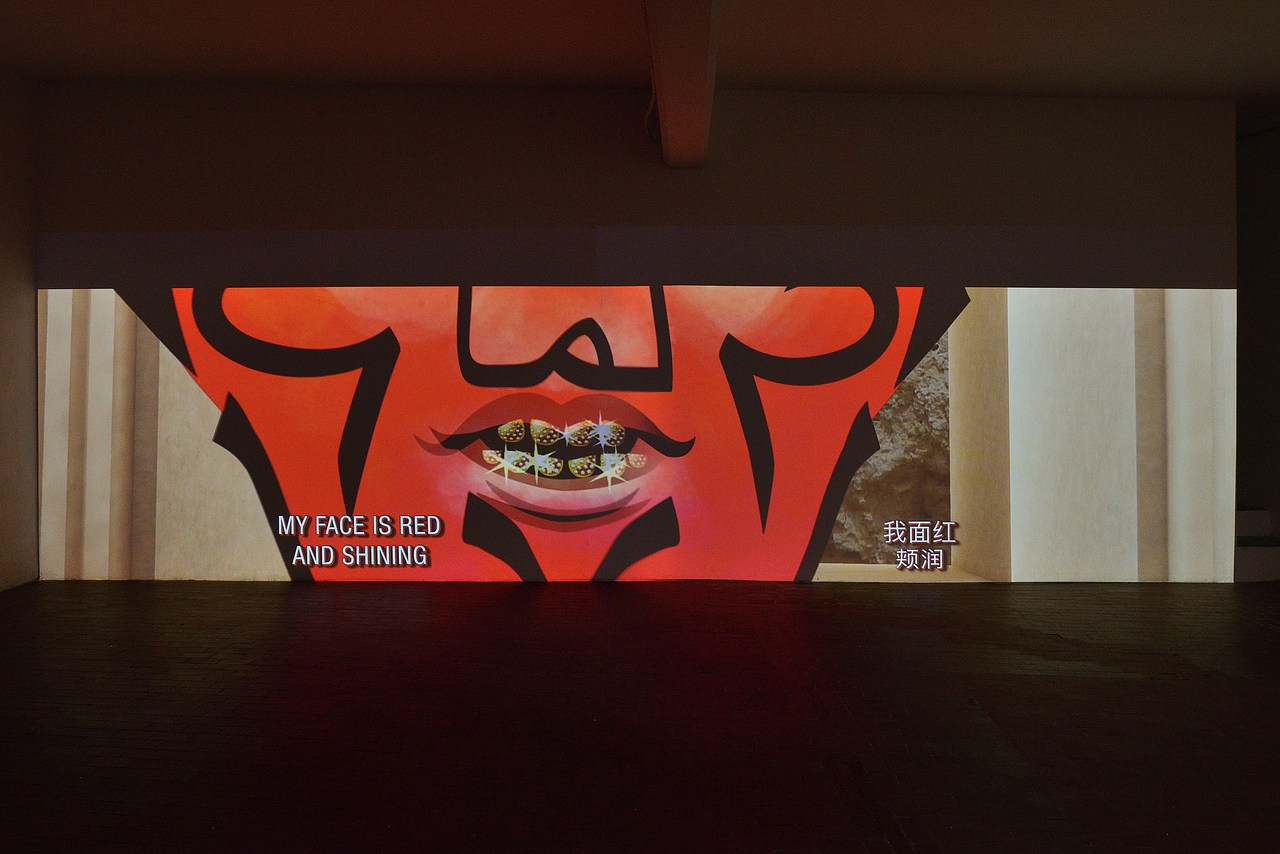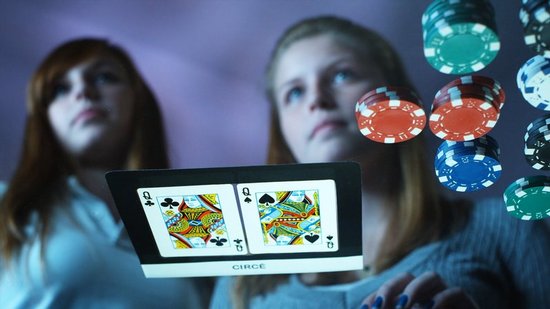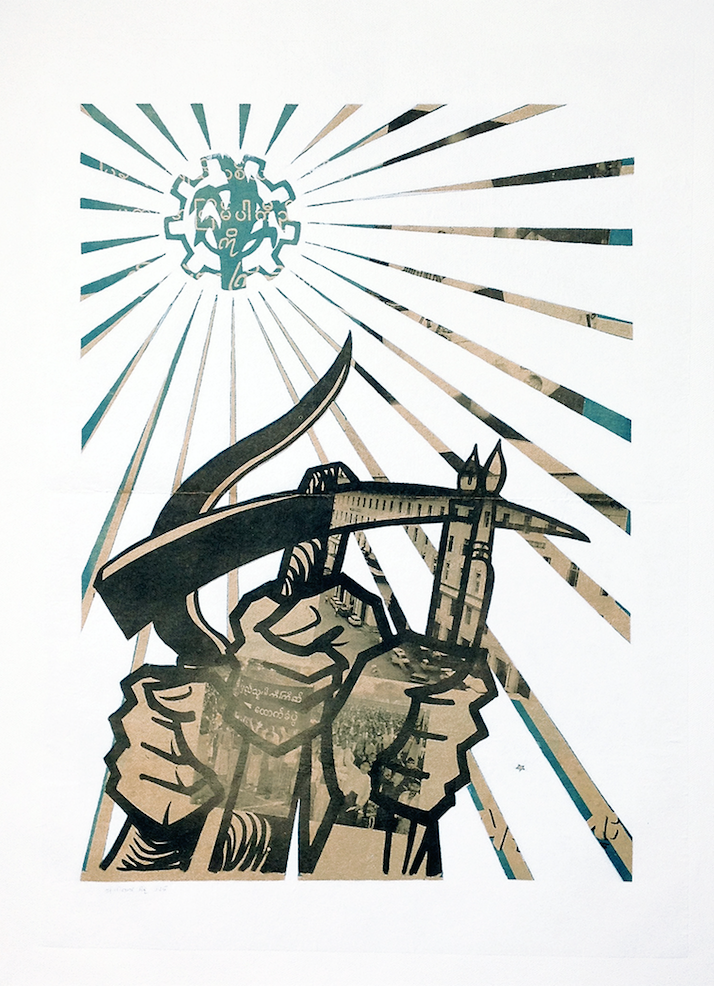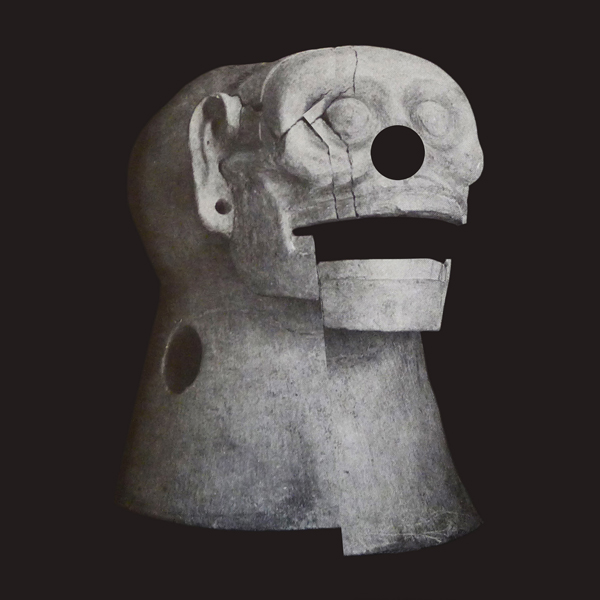
© » KADIST
Etel Adnan and Lynn Marie Kirby
Drawing & Print (Drawing & Print)
In conjunction with KADIST’s 2017 exhibition If Not Apollo, the Breeze , artist and filmmaker Lynn Marie Kirby performed Transmissions , a video and live reading created with longtime collaborator Etel Adnan. Inspired by time spent together in Paris, the piece incorporated open-ended conversation about the oracle, Mount Tamalpais (a subject of long-standing fascination for Adnan and the subject of hundreds of works), and a suite of collaborative drawings. The drawings, made in India ink and created spontaneously, are remarkable evidence of two lives, minds, and hands in dialogue.

© » KADIST
Etel Adnan
Adnan’s paintings are simple images with bold contrasting colors and rich textures. This particular work has an iconic feel and a strong physical presence in spite of its diminutive size. All of her paintings are small but, like Howard Hodgkin’s work, their intensity gains from their diminutive size.
![Elevación [Elevation]](https://kadist.org/wp-content/uploads/2022/09/IMG_escena001_3513-scaled.jpg)
© » KADIST
Ana María Millán
Interested in role-play and videogames, Ana María Millán developed workshops with different communities in order to create characters and scenarios for her animations, often in collaboration with a choreographer. Elevación evokes various narratives inspired by the comicstrip Marquetalia, Raíces de la Resistencia (Marquetalia, Roots of the Resistance) (2011). This comic strip is a memoir of the FARC (Revolutionary Armed Forces of Colombia) guerillas written by Jesús Santrich, one of its leaders who, after the 2016 Peace Agreement, rejoined dissident members of the organization in a clandestine guerrilla splinter group in 2019.
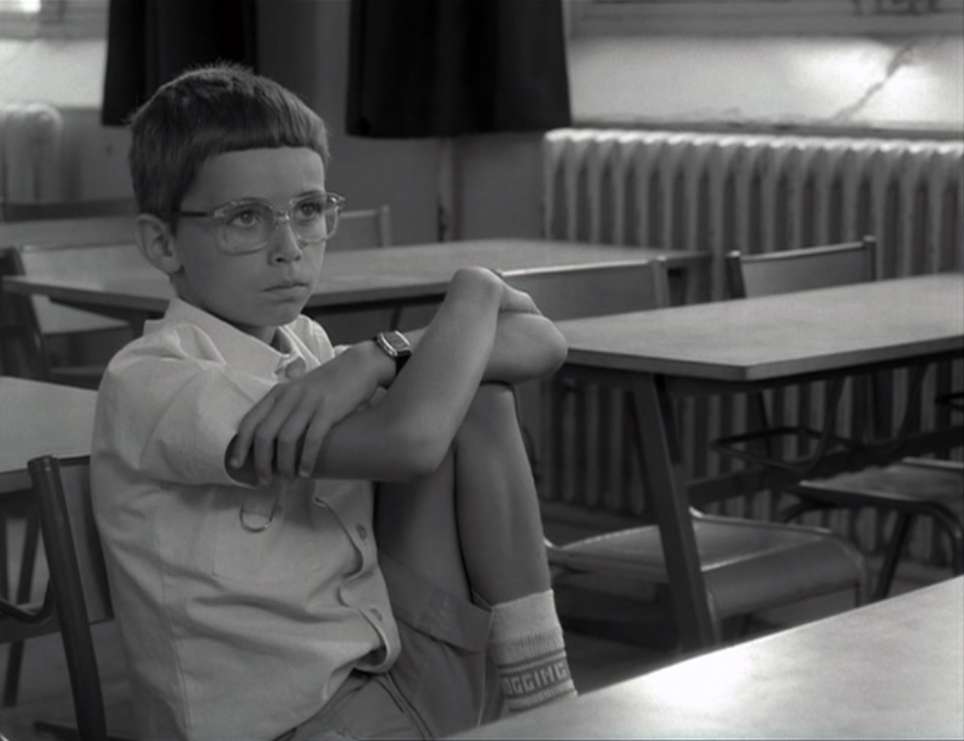
© » KADIST
Jean-Marie Straub and Danièle Huillet
En rachâchant is based on the short story Ah! Ernesto! (1971) by Marguerite Duras in which the child Ernesto does not want to go to school anymore as all that he is taught are things he does not know.

© » KADIST
João Maria Gusmão and Pedro Paiva
The artist duo João Maria Gusmão and Pedro Paiva traveled to Japan for a month to make a series of short 16mm films, often shot in slow-motion. This film, shown in continuous loop, has a run-time of just under 3 minutes, and is presented without sound. It captures a traditional Shisa (combination of a dog and lion from Okinawan mythology) animated by an invisible person.

© » KADIST
Marie Voignier
“Na China” means “In China” in Igbo language. Marie Voignier’s film NA CHINA! focuses on the African women communities who have emigrated to Guangzhou, in the southeast of China.

© » KADIST
Lynn Hershman Leeson
Lynn Hershman Leeson’s genre-bending documentary Strange Culture tells the story of how one man’s personal tragedy turns into persecution by a paranoid, conservative, and overzealous government. Through interviews, scripted acting, and illustrations, Hershman Leeson outlines the series of absurd events that led to New York state’s case against the former SFAI Associate Professor and artist Steve Kurtz. By closely following Kurtz’s story, Hershman Leeson reveals a strange ripple effect of the Bush administration’s destructive policies.

© » KADIST
Lynn Hershman Leeson
Using the seminal 1958 film Vertigo as a launchpad, Lynn Hershman Leeson explores the blurred lines between fact and fantasy in VertiGhost , a film commissioned by the Fine Arts Museums in San Francisco. VertiGhost features the re-creation of select scenes from Vertigo (which takes place in San Francisco), documentation of the life of a painting by Amedeo Modigliani in the Legion of Honor’s collection that was enshrouded by questions of authenticity, as well as interviews—including with the original film’s star Kim Novak— about the construction of realities in life and art. By thoughtfully overlaying these conversations and events, Hershman Leeson distills complex conversations around identity and authenticity into concise insights in just over 12 minutes.

© » KADIST
Marie Voignier
Tourisme International was shot as the recording of a show on the scale of a country. In the urgency of perpetual travel, this tourist journey visits monuments, museums, institutions presented by North Korean guides whose voices we do not hear. Marie Voignier entirely redesigned the sound of each sequence in post-synchronization, making only the living experiences of footsteps and rustling of clothes audible, to create a new universe, disconnected from the official discourses.

© » KADIST
Vuth Lyno
25 by Vuth Lyno addresses the legacy of the UN’s 1992-93 peacekeeping operation in Cambodia (UNTAC). This operation steered the country’s transition out of three decades of war and destruction—civil war, the Khmer Rouge era (1975-79), and the factional conflicts of the 1980s—towards a new, ‘democratic’ future. It was the most ambitious and successful UN peacekeeping mission of its time.

© » KADIST
Alejandro Marré
Typical Weapons is a series of sculptural interventions where Alejandro Marre transforms traditional Guatemalan craft objects usually sold as souvenirs into weapons. Wooden flutes, hacky sacks, and musical instruments are woven with rope to appear as nunchucks, slingshots, and other forms of armament. Designed to be exhibited as objects from an archaeological museum, the previously innocuous representations of Guatemalan popular culture acquire darker meanings as they come to symbolize the brutality and extreme violence that now mark the country.

© » KADIST
Maria Taniguchi
Untitled (Celestial Motors) is a visual meditation on an icon of modern urban Philippine life—the jeepney. This ubiquitous form of public transportation, originally built from U. S. military jeeps left on the islands after World War II, is normally exuberantly painted and personalized. They are known for their crowded seating and kitsch decorations, which have become an omnipresent symbol of Philippine culture.

© » KADIST
Maria Bussman
Drawing & Print (Drawing & Print)
The drawing “Heidegger’s Cabin” (2005) is inspired by Martin Heidegger’s essay, “The Origin of the Work of Art.” During the artist’s stay in a high alpine area, near a lake reservoir, Bussmann related the landscape in her surroundings to her reading of Heidegger’s terms on the work of art and the meaning of a “thing.” In attempt to link spiritual heights to natural heights, Bussmann metaphorically relates the subjects of being and truth to a hiking path, and its different degrees of challenge and risk. In the drawings rather than finding the optimal path to reach ultimate meaning and materialization, Bussmann never arrives at “Heidegger’s Cabin,” and instead is led off the beaten track to areas she never discovered before. Upon her return from the mountains in 2004 and 2005, she continued to develop the series, leading up to 20 drawings on handmade paper that attempt to problematize Heidegger’s theory on artworks as “things” as bearers of traits, “things” confronting the world of perception, and “things” as formed matter.

© » KADIST
Maria Taniguchi
Maria Taniguchi works across several media but is principally known for her long-running series of quasi-abstract paintings featuring a stylized brick wall device. Full of subtle gradations and low-key modulations, these are her trademark: a sustained, reiterative practice, steeped in repetition but carefully attuned to the economies and the sculptural presence of painting. Her approach to painting is conceptual.

© » KADIST
Benoît Maire
The piece consists of sculpture of 10 elements, among them: a globe, a picture of a gorilla, a chair, scrabble letters, 3 glasses of black ink, a book whose title is illuminated by the beam of a 8mm projector, a pair of boots, etc. The display is a collection of selected objects chosen in response to the reading of a text by Alain Badiou (the first chapter of the seminar “Le réel est l’impasse de la formalisation; la formalisation est le lieu de passe en force du réel” from February 4, 1975). The elements are a visual way to question the transposition of an idea into reality.

© » KADIST
Lynn Hershman Leeson
Hershman Leeson’s documentary, Women Art Revolution (W. A. R.) draws from hundreds of hours of intimate interviews with her contemporaries—visionary artists, historians, curators and critics—who recount their fight to break down the barriers facing women both in the art world and society at large. The film features an original score by Carrie Brownstein, formerly of the band Sleater-Kinney.
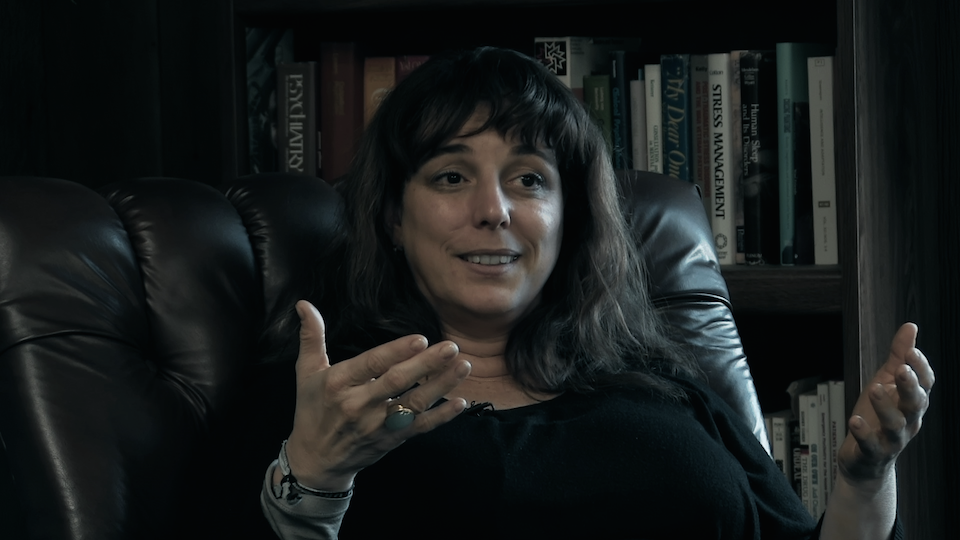
© » KADIST
Lynn Hershman Leeson
Tania Libre is a film by Lynn Hershman Leeson centered around renowned artist Tania Bruguera and her experience as a political artist and activist under the repressive government of her native Cuba. The film begins with the voice of Tilda Swinton narrating a manifesto of artists’ rights written by Bruguera in which she expresses her views on art, our universal right to both enjoy and create art, and the duty that artists have to dissent. The film then captures a series of therapy sessions between Bruguera and Dr. Frank M. Ochberg—the founding father of trauma therapy, particularly PTSD and Stockholm Syndrome—where Bruguera describes with great candor and earnestness several traumatic experiences such as the betrayal by her father who handed her to Cuban secret service, and her imprisonment in Havana years later after advocating for freedom of expression.

© » KADIST
Benoît Maire
The series Clouds paintings by Benoît Maire features oil on canvas works in varying format, in which the artist depicts clouds, using a variety of tools, including a spray gun, paintbrush, or palette knife. The cloud motif in this series of paintings questions the limits of abstraction by playing with the concept of pareidolia—a psychological phenomenon by which we recognize familiar shapes in landscapes, clouds, or ink stains. Through his careful composition and use of pentimenti, Maire invites the viewer to project their imagination onto these colorful clouds.

© » KADIST
María Buenaventura
The Territory is not for sale is a process of reflection and research with people, thinkers and community leaders from Usme, a rural part of Bogotá on the tenuous verge of becoming urban. As an art object and installation, it comprises multiple stacks of paper each containing the decrees of land expropriation from many different peasant farmers who are being forced to sell their lots of land back to the government. Usme lies at the southern urban-rural border strategically located next to the Páramo de Sumapaz, an enormous neo-tropical tundra ecosystem and water reserve.

© » KADIST
Yee I-Lann
PANGKIS by Yee I-Lann is a looped video performance. The work is named after the triumphant warrior cry, an animistic guttural call, which punctuates the traditional Dusun Sumazau dance. For this work, the artist collaborated with Tagaps Dance Theatre, a group of young dancers whose practice merges traditional and contemporary styles.

© » KADIST
Yee I-Lann
Sarcastically titled to call attention to the problematic notions underlying colonialism, this photograph shows hundreds of Native Malaysians seated quietly behind one of their colonial oppressors. The artwork belongs to Yee’s series Picturing Power (2013) that deals with the destabilizing impacts of neo-colonialism and globalization on Southeast Asia’s history. Yee approaches the aesthetics and politics of the ethnographic gaze with both irony and humanity, challenging the modes of seeing inherent to the British colonization of Malaysia.

© » KADIST
María Isabel Rueda
The Real. Retrato de Norman Mejía. (The Real. A Portrait of Norman Mejía.)

© » KADIST
Mario Garcia Torres
In Up All Night, Waiting for the Chelsea Hotel Magic to Spark My Creativity Mario García Torres constructs and documents a hypothetical scene, situating himself within a lineage of artists and creatives that used to congregate at the historic hotel. The long-exposure capture depicts García Torres at multiple stages of brainstorming, devising, and introspection, his ethereal figure connected with artistic giants of the past. Yet, there is also an insipid tone beyond mere insomnia or frustration at the lack of being able to garner inspiration.

© » KADIST
Mario Ybarra Jr.
Ammo Bunker (2009) is a multipart installation that includes large-scale wall prints and an architectural model. The work takes as its departure point the history of Wilmington, Ybarra’s native hometown in southern Los Angeles. The piece refers to a Civil War era ammunition store that Ybarra found at the heart of the harbor close to Long Beach.

© » KADIST
Maria Fernanda Plata
Unraveling, or “unweaving” sections of fabric, Maria Fernanda Plata arrived at delicate and tenuous-looking forms, both ghostly and gentle. Her careful meditations in fabric reflect Plata’s ongoing interest in the relationship between people and their environments, in fragility, systems, and destruction.

© » KADIST
Mario Garcia Torres
Mario Garcia Torres films a game of Charades among professional actors guessing the former North Korean dictator’s favorite Hollywood films. Indeed rather surprisingly Kim seems to have had a huge collection of Western videos and he published a book called “On the art of the Cinema” in 1973. As the final acknowledgments indicate, Garcia Torres’s work was produced following in depth research, consulting information given by director Shin Sang-ok who has been kidnapped by Kim in 1978, as well as Jerrold Post (The George Washington University) and Timothy Savage (Nautilus Institute for Security and Sustainable Development).

© » KADIST
Mario Garcia Torres
Mario Garcia Torres imagines cinematic devices to replay stories occasionally forgotten by Conceptual art. For him, this is a way of rethinking the tradition in a more personal way, to have a grip on events of recent history and examine them with a curiosity, both critical and sensual. The artist emphasizes the fact that new ideas and meanings may arise from these archaeological narratives.
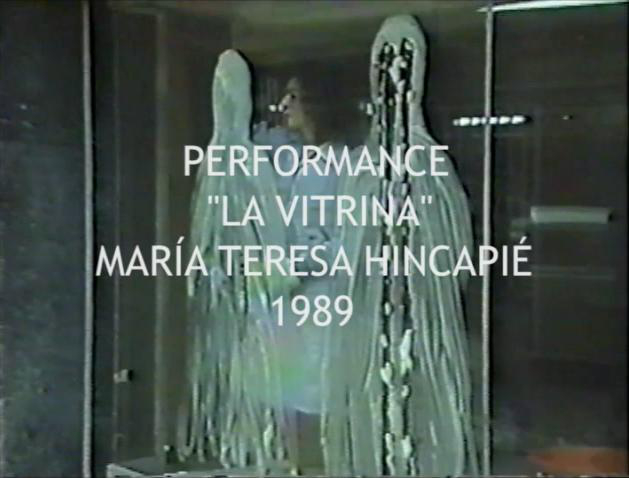
© » KADIST
María Teresa Hincapié
In the performance video Vitrina , María Teresa Hincapié stood inside a storefront window in downtown Bogota, unannounced, for eight hours a day, wearing a uniform and initially carrying out cleaning chores. As the day and passers went by, the routine became more playful: she would send kisses to bus drivers on the busy Avenida Jiménez who would return them, use the newspaper with which she was shining the glass to flirtatiously hide and engage with an improvised audience or draw the shape of her body with soap and a sponge. She would interrupt these chores to carry out other ‘feminine’ activities, like brushing her hair or applying make-up, only to return to frantically cleaning the transparent surface that separated her from the public.

© » KADIST
Mario Garcia Torres
Mario Garcia Torres discovered the work of artist Oscar Neuestern in an article published in ARTnews in 1969. This article, which is the only trace of his work, is indicative of a lack of interest by Neuestern to leave his name in history; to “defend an artistic activity that has little or no interest to last.” Oscar Neuestern could only remember the previous 24 hours, of which his life and his work are in constant erasure and reconstruction. His practice was “to let things be done with time and the unconscious,” while “not fearing the void.” He looked for the absolute through transparency and symmetry.
Mario Garcia Torres
- location: Mexico City, Mexico
- year born: 1975
- gender: male
- nationality: Mexican
- home town: Monclova, Mexico
Lynn Hershman Leeson
- location: San Francisco, California
- year born: 1941
- gender: female
- nationality: American
- home town: Cleveland, Ohio
Yee I-Lann
- location: Kuala Lumpur, Malaysia
- year born: 1971
- gender: female
- nationality: Malaysian
- home town: Sabah, Malaysia
Chantal Edie and Zacharie Ngnogue
Chantal Edie and Zacharie Ngnogue are a photography duo who channel their personal experiences into social commentaries...
Leung Chi Wo and Wong Sara
Leung Chi Wo tends to highlight in his art the boundaries between viewing and voyeurism, real and fictional, and art and the everyday...
Maria Taniguchi
Throughout her paintings, sculptures, and videos, Maria Taniguchi unpacks knowledge and experience—connecting material culture, technology, and natural evolution—and investigates space and time, along with social and historical contexts...
John Wood and Paul Harrison
John Wood and Paul Harrison have been working collaboratively since 1993, producing single screen and installation-based video works...
Ho Rui An
The artist, writer, and researcher Ho Rui An probes histories of globalization and governance, performing a detournement of dominant semiotic systems across text, film, installation, and lecture...
Marie Voignier
Marie Voignier’s work presents a subtle criticism of the transitory status of action within the social and political elds...
An-My LE
- location: New York, New York
- year born: 1960
- gender: female
- home town: Saigon, Vietnam
Ana Vaz
Ana Vaz is an artist and filmmaker whose works speculate on the relationships between self and other, and myth and history, through a cosmology of signs, references, and perspectives...
Slavs and Tatars
Self-described as an “Eurasian-based” collective, Slavs and Tatars investigates the “polemics and intimacies” of the region “east of the former Berlin Wall and west of the Great Wall of China” or Caucasia...
Ad Minoliti
Ad Minoliti is a painter who combines the pictorial language of geometric abstraction with the perspective of queer theory...
Mary Ann Aitken
Mary Ann Aitken was known to be very private about her art practice; she was considered somewhat of an outsider by her peers affiliated with the second wave of Detroit’s Cass Corridor arts movement...
Donna Conlon and Jonathan Harker
- location: Panama City, Panama
- year born: 1966
- nationality: American and Ecuadorian
Jay Chung and Takeki Maeda
Jay Chung and Takeki Maeda’s practice is characterized by performance, which often involves weighty unsettling humour...
Mario Ybarra Jr.
- location: Los Angeles, California
- year born: 1973
- gender: male
- nationality: American
- home town: Los Angeles, California
Pauline Boudry and Renate Lorenz
Working together since 2007, artist duo Pauline Boudry and Renate Lorenz conduct research on the heritage of cultural and gender studies, concentrating primarily on gender discourses and the notion of queer...
Lenka Clayton and Phillip Andrew Lewis
Lenka Clayton and Phillip Andrew Lewis’s collaborative practice is social at its core: it engages with and connects communities outside of the so-called art world in both production and presentation...
Michelle and Noel Keserwany
Michelle and Noël Keserwany compose and perform their own songs, as well as contribute to the illustrations and animations featured in the videos they produced...
John Lucas and Claudia Rankine
John Lucas and Claudia Rankine are interdisciplinary thinkers and makers committed to exploring the nuances of race and power in our daily lives...
Angela Detanico and Rafael Lain
Linguists, semiologists, and graphic designers by training, Angela Detanico and Raphaël Lain consider the use of graphic signs in society...
Etel Adnan and Lynn Marie Kirby
Visual artist, poet, and essayist Etel Adnan writes what must be communicated through language, and paints what cannot...
Musquiqui Chihying and Gregor Kasper
Through his artistic career, Musquiqui Chihying has striven to dislocate and reconstruct established modes of behavior within systems and structures of power...
Etel Adnan
Etel Adnan was born on February 24, 1925 in Beirut and died in Paris on November 14, 2021...
Jordan Ann Craig
Jordan Ann Craig is a Northern Cheyenne artist born and raised in the Bay Area; she invests her work with a strong interest in Indigenous culture and the history of its destruction by settlers...
Maayan Amir and Ruti Sela
Maayan Amir and Ruti Sela, two young Israeli women artists work collaboratively or individually by project...
Ei Arakawa and Sergei Tcherepnin
Ei Arakawa and Sergei Tcherepnin began their audio-visual and performative collaboration in 2007...
Gabriella and Silvana Mangano
Gabriella Mangano and Silvana Mangano are an artistic duo and identical twins known for their collaborative and performative video practice...
Maria Bussman
Maria Bussmann’s works represent an insistent attempt to fathom the epistemological quality of her medium, drawing...

© » APERTURE
about 5 months ago (12/01/2023)
For the past two decades, An-My Lê has used photography to examine her personal history and the legacies of US military power, probing the tension between experience and storytelling....
-
1980-1989
Jean-Marie Straub and Danièle Huillet
1982En rachâchant is based on the short story Ah! Ernesto! (1971) by Marguerite Duras in which the child Ernesto does not want to go to school anymore as all that he is taught are things he does not know...
María Teresa Hincapié
1989In the performance video Vitrina , María Teresa Hincapié stood inside a storefront window in downtown Bogota, unannounced, for eight hours a day, wearing a uniform and initially carrying out cleaning chores...
-
1990-1999
John Wood and Paul Harrison
1996One of John Wood and Paul Harrison’s earliest works, Device features Harrison performing a series of actions, assisted by the titular ‘devices’, that use physics to force his body into unusual and uncomfortable positions...
John Wood and Paul Harrison
19973-Legged is an early video work by John Wood and Paul Harrison in which they appear with their legs tied together (as one would do in a three-legged race)...
-
2000-2009
Mary Ann Aitken
2002Untitled (Boom Box, Double-Sided) by Mary Ann Aitken is representational painting of a boom box on an unconventionally long canvas painted on both sides, to mimic the scale and appearance of the actual appliance...
Maayan Amir and Ruti Sela
2003In Beyond Guilt the two artists create a portrait of our generation in three parts...
Mario Garcia Torres
2004Mario Garcia Torres imagines cinematic devices to replay stories occasionally forgotten by Conceptual art...
Maria Bussman
Drawing & Print
2005(Drawing & Print) The drawing “Heidegger’s Cabin” (2005) is inspired by Martin Heidegger’s essay, “The Origin of the Work of Art.” During the artist’s stay in a high alpine area, near a lake reservoir, Bussmann related the landscape in her surroundings to her reading of Heidegger’s terms on the work of art and the meaning of a “thing.” In attempt to link spiritual heights to natural heights, Bussmann metaphorically relates the subjects of being and truth to a hiking path, and its different degrees of challenge and risk...
Mario Garcia Torres
2005Mario Garcia Torres films a game of Charades among professional actors guessing the former North Korean dictator’s favorite Hollywood films...
Benoît Maire
2006The piece consists of sculpture of 10 elements, among them: a globe, a picture of a gorilla, a chair, scrabble letters, 3 glasses of black ink, a book whose title is illuminated by the beam of a 8mm projector, a pair of boots, etc...
Lynn Hershman Leeson
2007Lynn Hershman Leeson’s genre-bending documentary Strange Culture tells the story of how one man’s personal tragedy turns into persecution by a paranoid, conservative, and overzealous government...
Alejandro Marré
2007Typical Weapons is a series of sculptural interventions where Alejandro Marre transforms traditional Guatemalan craft objects usually sold as souvenirs into weapons...
Mario Ybarra Jr.
2009Ammo Bunker (2009) is a multipart installation that includes large-scale wall prints and an architectural model...
Pauline Boudry and Renate Lorenz
2009Salomania sees choreographer and filmmaker Yvonne Rainer and artist Wu Tsang rehearse scenes from Valda’s Solo , a chapter of a film Rainer made in 1972 after having seen women perform the dance of the seven veils in Alla Nazimova’s 1923 silent film Salomé ...
Jay Chung and Takeki Maeda
2009Jay Chung and Q Takeki Maeda remake a clip from the 1970s they found on the internet, and without really changing this archive material, displace it by imitating the staging and the acting with scrupulous precision...
Mary Ann Aitken
2009Untitled (Diptych) by Mary Ann Aitken is a pair of paintings; one entirely abstract and the other a hybrid of representational and abstract elements...
-
2010-2019
Etel Adnan
2010Adnan’s paintings are simple images with bold contrasting colors and rich textures...
Mario Garcia Torres
2010In Up All Night, Waiting for the Chelsea Hotel Magic to Spark My Creativity Mario García Torres constructs and documents a hypothetical scene, situating himself within a lineage of artists and creatives that used to congregate at the historic hotel...
Olive Martin and Patrick Bernier
2010The Mohawk, the emblematic Frontier river in the period of American colonisation, is here a cable of data transmission, and the 7 Sultans Casino is a virtual destination, one of the three hundred online casinos hosted by the servers located in Kahnawake, a small native american indian reserve to the south of Montreal...
The Propeller Group and Superflex
2010Fade In (the whole title of the film is actually the entire five page script) is a collaboration with the Danish artist collective Superflex (group of freelance artist–designer–activists committed to social and economic change, founded in 1993 by Jakob Fenger, Rasmus Nielsen and Bjørnstjerne Christiansen)...
Leung Chi Wo and Wong Sara
2010Office Lady with a Red Umbrella restages a figure from a 1980 postcard made from a photograph from 1950’s...
Jane Jin Kaisen and Guston Sondin-Kung
2010The Woman, The Orphan, and The Tiger begins with the sound of women’s voices describing histories of violence, of things repressed and silenced...
Leung Chi Wo and Wong Sara
2010Photojournalist with Two Cameras restages a portrait of a photojournalist from the background of an old photograph of protest published in South China Morning Post on January 10, 2010 under the headline “Return of the Radicals: Recent angry protests are nothing new.” The photojournalist in the photograph, probably from a protest of earlier decades, was capturing the scene of a protester’s arrest while wearing two cameras...
An-My LE
2010The print Patient Admission, US Naval Hospital Ship Mercy, Vietnam (2010) features an Asian Buddhist monk and an American Navy Solider on board the Mercy ship –one of the two dedicated hospital ships of the United States Navy– sitting upright in their chairs and adopting the same posture...
Võ An Khánh
2010In Extra Curriculum Political Science Class 7/1972 , a group of women walk bare-foot and single file towards Dat Mui Mangrove in Ca Mau Province to attend ‘political science class’...
María Buenaventura
2011The Territory is not for sale is a process of reflection and research with people, thinkers and community leaders from Usme, a rural part of Bogotá on the tenuous verge of becoming urban...
Ei Arakawa and Sergei Tcherepnin
2011Part of a series entitled “Looking at Listening”, 2011, the piece invited the spectator to experiment and consider sound as a kinetic and synesthetic process, where multiple experiences and senses can cross...
Tun Win Aung and Wah Nu
2011Tun Win Aung and Wah Nu initiated the series 1000 Pieces (of White) in 2009, as a way to produce objects and images as a portrait of their shared life as partners and collaborators...
Ana Teresa Fernández
Drawing & Print
2011(Drawing & Print) The artist writes about her work Borrando la Frontera, a performance done at Tijuana/San Diego border: “I visually erased the train rails that serve as a divider between the US and Mexico...
Maria Taniguchi
2012Untitled (Celestial Motors) is a visual meditation on an icon of modern urban Philippine life—the jeepney...
Ana Roldán
2012Ana Roldán’s Primeval forms series looks up close at the fecund shapes of plants often found in the artist’s native Mexico...
Ana Roldán
2012Ana Roldán’s Displacements works use images taken from a 1970s exhibition catalogue for an exhibition called The Death in Mexico...
Donna Conlon and Jonathan Harker
2012In Tapitapultas (2012), Donna Conlon and Jonathan Harker comment on mass consumerism and pollution by way of a game they invented...
Yee I-Lann
2013Sarcastically titled to call attention to the problematic notions underlying colonialism, this photograph shows hundreds of Native Malaysians seated quietly behind one of their colonial oppressors...
Marie Voignier
2014Tourisme International was shot as the recording of a show on the scale of a country...
João Maria Gusmão and Pedro Paiva
2015The artist duo João Maria Gusmão and Pedro Paiva traveled to Japan for a month to make a series of short 16mm films, often shot in slow-motion...
Maria Taniguchi
2015Maria Taniguchi works across several media but is principally known for her long-running series of quasi-abstract paintings featuring a stylized brick wall device...
Maria Fernanda Plata
2015Unraveling, or “unweaving” sections of fabric, Maria Fernanda Plata arrived at delicate and tenuous-looking forms, both ghostly and gentle...
Gabriella and Silvana Mangano
2015There is no there by Gabriella and Silvana Mangano is a black and white looped video with sound, in conjunction with a live performance...
Lynn Hershman Leeson
2016Tania Libre is a film by Lynn Hershman Leeson centered around renowned artist Tania Bruguera and her experience as a political artist and activist under the repressive government of her native Cuba...
Christine Sun Kim and Thomas Mader
2016Indexes that either allow or inhibit the establishment of communication exist in both signed as well as spoken languages...
Etel Adnan and Lynn Marie Kirby
Drawing & Print
2017(Drawing & Print) In conjunction with KADIST’s 2017 exhibition If Not Apollo, the Breeze , artist and filmmaker Lynn Marie Kirby performed Transmissions , a video and live reading created with longtime collaborator Etel Adnan...
Lynn Hershman Leeson
2017Using the seminal 1958 film Vertigo as a launchpad, Lynn Hershman Leeson explores the blurred lines between fact and fantasy in VertiGhost , a film commissioned by the Fine Arts Museums in San Francisco...
John Lucas and Claudia Rankine
Drawing & Print
2018(Drawing & Print) Historically, blondeness has been a signifier for desirability and beauty, speaking to “purity” — the purity of whiteness — like no other bodily attribute except, perhaps, blue eyes...
Pooja Gurung and Bibhusan Basnet
2018DADYAA: The Woodpeckers of Rotha by Pooja Gurung and Bibhusan Basnet illuminates a unique and seldom seen international perspective on indigenous cultures and contemporary social issues in the Nepali context...
Ana María Millán
2019Interested in role-play and videogames, Ana María Millán developed workshops with different communities in order to create characters and scenarios for her animations, often in collaboration with a choreographer...
Musquiqui Chihying and Gregor Kasper
2019Addressing the legacy of colonialism, The Guestbook by Musquiqui Chihying and Gregor Kasper is a slow-paced, black-and-white film exploring the German colony of Togoland, now the Republic of Togo...
Ad Minoliti
2019In Ad Minoliti’s expansive three-panel painting Abstracción geométrico-galáctica the artist’s hallmark geometric abstractions serve as playful substitutes for more straightforward depictions of the world...
Jordan Ann Craig
2019Something To Do With Being Held by Jordan Ann Craig is inspired by a Cheyenne bead bag...
-
2020-2029
Yee I-Lann
20207-headed Lalandau Hat by Yee I-Lann is an intricately woven sculpture evoking the ceremonial headdress worn by Murut men in Borneo...
Chantal Edie and Zacharie Ngnogue
2020Au non de la liberté (Tiko drink Kumba drunk) is a photographic series by Zacharie Ngnogue and Chantal Edie that considers the correlation between those who hold power in Cameroon and how their actions affect the populations they rule in often compromising ways...
Chantal Edie and Zacharie Ngnogue
2020Au non de la liberté (Tiko drink Kumba drunk) is a photographic series by Zacharie Ngnogue and Chantal Edie that considers the correlation between those who hold power in Cameroon and how their actions affect the populations they rule in often compromising ways...
Chantal Edie and Zacharie Ngnogue
2020Au non de la liberté (Tiko drink Kumba drunk) is a photographic series by Zacharie Ngnogue and Chantal Edie that considers the correlation between those who hold power in Cameroon and how their actions affect the populations they rule in often compromising ways...
Jonas Van and Juno B
2021Jonas Van and Juno B’s video work Kebranto is anchored by the figure of Boitatá, a snake that is part of the imaginary Guaraní communities that live between the current nation-states of Argentina, Brazil, Paraguay, and Uruguay...
Miguel and Natalia Fernández de Castro and Mendoza
2022The Absolute Restoration of All Things is a collaboration by artist Miguel Fernández de Castro and anthropologist Natalia Mendoza...
Köken Ergun and Satyam Mishra
2022Nepal and China signed an agreement for the Belt and Road Initiative (BRI) in 2017...
Ana Vaz
2022Ana Vaz describes her film É Noite na América (It is Night in America) as an eco-terror tale, freely inspired by A cosmopolitics of animals by Brazilian philosopher Juliana Fausto; in which she investigates the political life of non-human beings and questions the modern idea of the exceptionality of the human species...
Michelle and Noel Keserwany
2022Les Chenilles by Michelle and Noël Keserwany is a sensual film that translates the source of women’s oppression into the means for their liberation...
Köken Ergun and Tashi Lama
2022Nepal and China signed an agreement for the Belt and Road Initiative (BRI) in 2017...
Köken Ergun and Satyam Mishra
2022Nepal and China signed an agreement for the Belt and Road Initiative (BRI) in 2017...
Lenka Clayton and Phillip Andrew Lewis
2022Five Hundred Twenty-Four, a single-channel video installation by Lenka Clayton and Phillip Andrew Lewis, features singers from over twenty Cleveland-area choirs counting numbers in an iterative process: one person sings “one”, then two people sing “two”, and so forth, to 524...










